The procedures for securing of cultural heritage vary according to the type of material and especially the type of damage it has suffered.
In this article we will talk about:
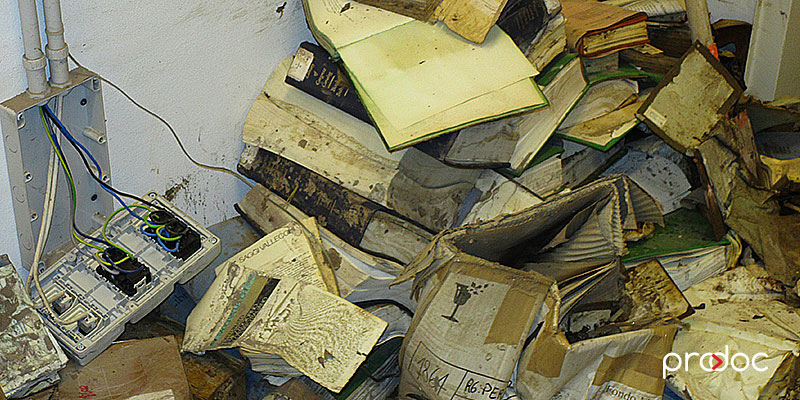
Security procedures after a fire
Generally the most serious damage to the archival and book heritage derives from damage due to fires: documentary material has a very high thermal potential, and is therefore extremely flammable and particularly exposed to this type of risk.
The probability of the occurrence of a fire within an archive is actually quite low, but the damage that would result from a calamitous event of this kind would be so serious as to make this risk a real danger, so it is necessary to prepare all the possible measures security.
The main cause of ignition of a fire derives from anomalies or irregularities in the functioning of the electrical systems, which can cause short circuits and cause the flames to burst.
The prevention action for this type of calamitous event must be concentrated first of all on the installation and maintenance of the automatic fire detection and extinguishing devices, and secondly, no less carefully, on the insulation of the electrical components and of heat sources.
Obviously, in the event of a fire, it is necessary to evacuate the premises as quickly as possible and immediately call the Fire Brigade and the security teams, and, in no case, you must try to save the assets at all costs, up to the moment in which the ceased danger for people will be unequivocally established, and therefore the possibility of returning to the structure and proceeding with the recovery of materials.
The type of fire that can occur in an archive falls within Class A, according to the subdivision made by the UNI EN 2:2005 standard: this type refers to fires of solid materials, generally of an organic nature, whose combustion normally takes place with the formation of embers. For this class of fires, combustion can take place in two different ways, which often occur simultaneously: through an open flame with slow combustion, and without visible flames with the formation of incandescent embers.
The latter type is the most dangerous, since it is as devastating as the one that generates open flames, but it is extremely insidious precisely because it is not immediately detectable.
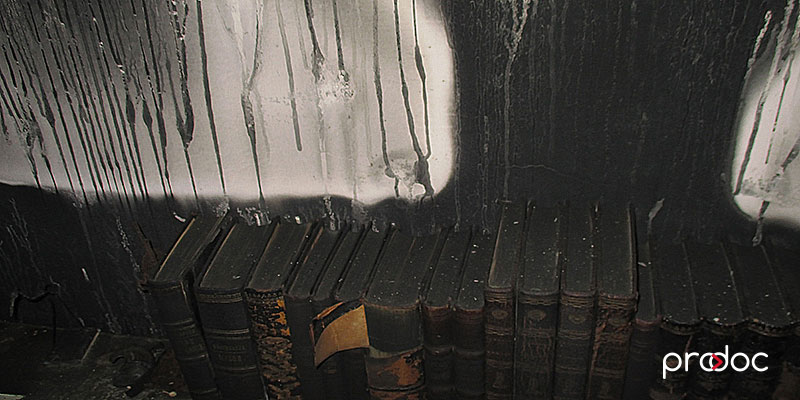
Damage caused by fire
The damage to the heritage caused by a fire, however, is not only that caused directly by the combustion of the documentary material, but also includes the damage caused to the furniture and shelving, which can cause collapses and subsidence of the structures, and the damage resulting from the flame extinguishing procedures, including wetting and damage from chemicals contained in fire extinguishers.
Furthermore, the fumes are mainly composed of carbon dioxide and unburnt solid particles that can spread the flames and which, depositing on the material in the form of ash and soot, can trigger degradation processes even in books and documents that are not directly hit by flames.
Safety procedures after a fire
The procedures for securing the archival and documentary heritage affected by fire mainly consist in the collection of the material and its subdivision according to the type of damage it has suffered.
In particular, it is necessary to immediately identify the portion of documents compromised due to the use of water in the fire extinguishing process: for this type of material it is necessary to act quickly and promptly by placing it inside suitable storage bags and freezing it.
Freezing allows you to stop the degradation processes caused by water, giving you the opportunity to calmly think about the best recovery processes to be implemented once the emergency has ceased.
As for the material damaged by fire, but not wet, it will be necessary to proceed with the collection and grouping of it in safe rooms that allow good storage conditions pending the reconditioning of the original premises: for no reason you must proceed with the direct elimination of the material, as part of the documentation, even if seriously damaged, could be saved or partially restored during the restoration phase.
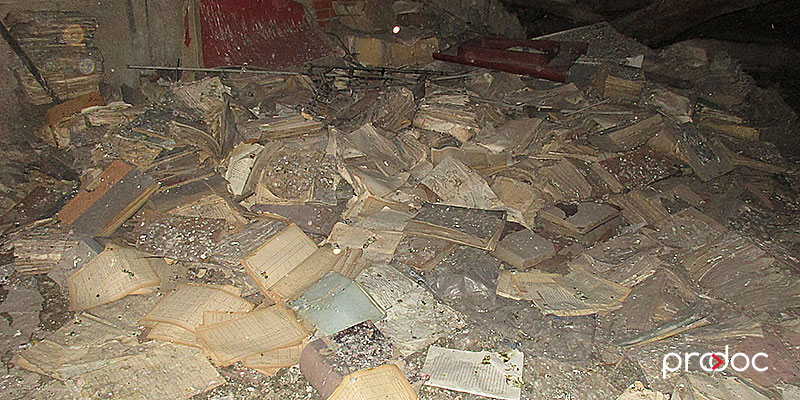
Securing assets after an earthquake
Another type of calamitous event that can affect a conservation institution is the earthquake, which, if of high entity, can cause damage not only to the heritage, but also and above all to buildings and can represent a serious danger for people.
In the event of an earthquake, the procedures established within the Emergency Plan must be put in place and first of all, the staff employed and any visitors who are inside the building must be rescued.
In the event that it is a large earthquake involving a large territorial area, it will be the task of the Civil Protection, Fire Brigade and bodies in charge to establish the best methods of response to the calamitous event and the tasks to be implemented to safeguard first of all human life.
Only when the cessation of danger to people has been established with certainty, it will be possible to proceed with the implementation of the rescue activities of the assets involved, while always paying particular attention to the possible imminent collapse of structures and shelving even after the conclusion of the seismic tremors.
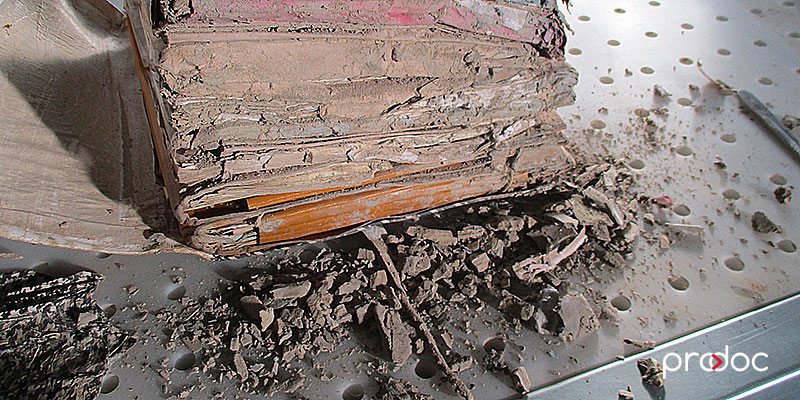
Damage caused by earthquakes
The greatest damage to archival and documentary material resulting from an earthquake is caused first of all by the fall of books and volumes from the shelves on which they are placed, by the collapse of the shelves or, in the worst case, by the collapse of the entire building: the safety procedures will, first of all, concern the collection of the material and its repositioning in spaces suitable for its temporary storage.
For this purpose, it is extremely useful to establish well in advance, during the drafting of the Emergency Plan, the possible shelter facilities in which to convey the material in the event of a disaster, so as to be able to act promptly and in such a way as to remove as soon as possible the heritage from the precarious and dangerous condition in which it finds itself, considering its possible exposure to atmospheric agents or microorganisms.
Indirect damage that may result from an earthquake is caused by the breakage of water pipes and electrical systems, which can cause the triggering of other dangerous events such as floods and fires.
In addition, the collapse of the building structures can cause the dispersion of dust containing toxic substances, used in the manufacture of architectural elements, which can rest on the documentary material triggering degradation processes, even of considerable entity.
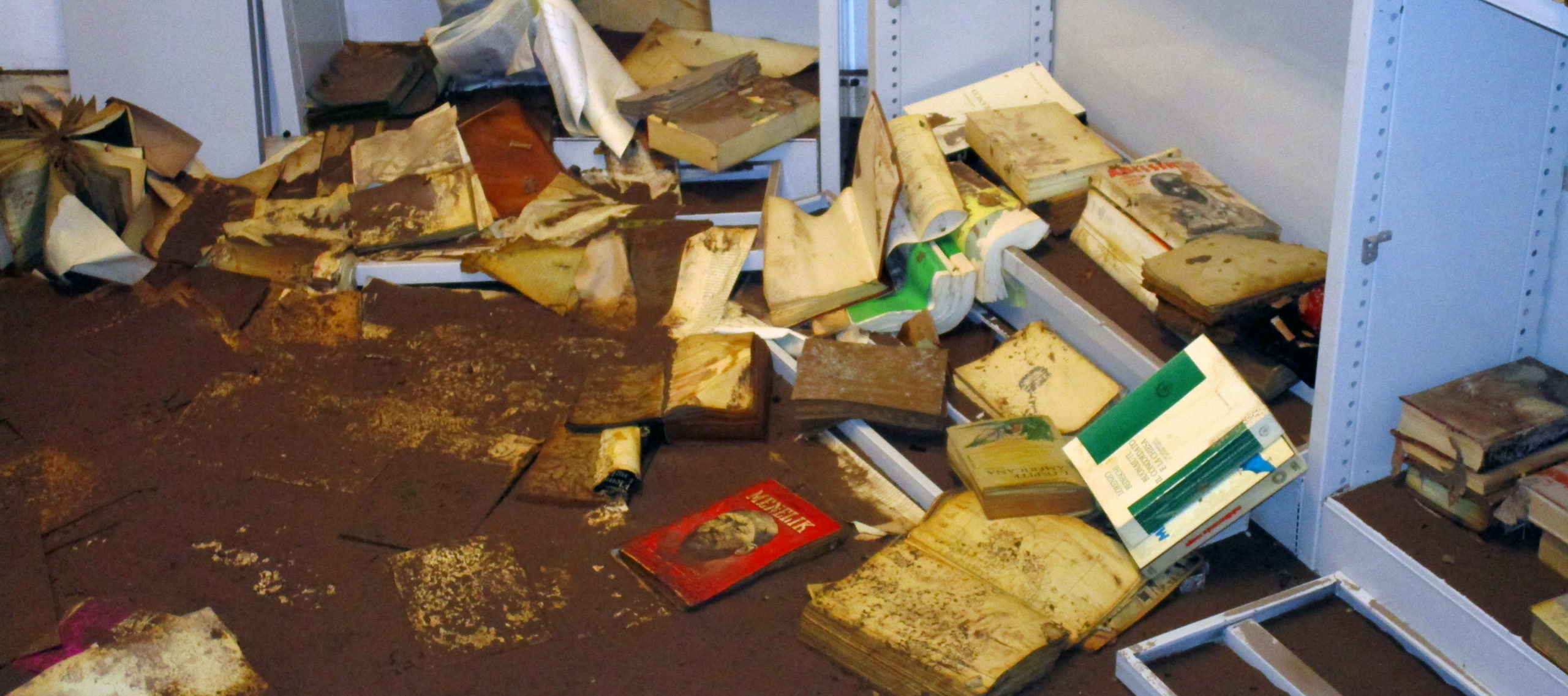
Securing assets after a flood
The most common calamitous event within archives is flooding, which can be caused by external events, such as torrential rains, flooding of rivers and tsunamis, or by internal events, the most common of which is the rupture of the water transport pipes.
Water damage to an archive represents an extremely risky event, as it can be the trigger for infections and attacks by microorganisms on documentary material: for this reason it is necessary to act as quickly as possible and promptly remove the assets from the dangerous condition.
La letteratura scientifica di settore indica come limite di tempo massimo entro cui agire per prevenire attacchi microbiologici 48 ore, ma sono stati riscontrati sviluppi di colonie fungine in tempi anche più brevi.
The scientific literature of the sector indicates 48 hours as the maximum time limit within which to act to prevent microbiological attacks, but development of fungal colonies has been found in even shorter times.
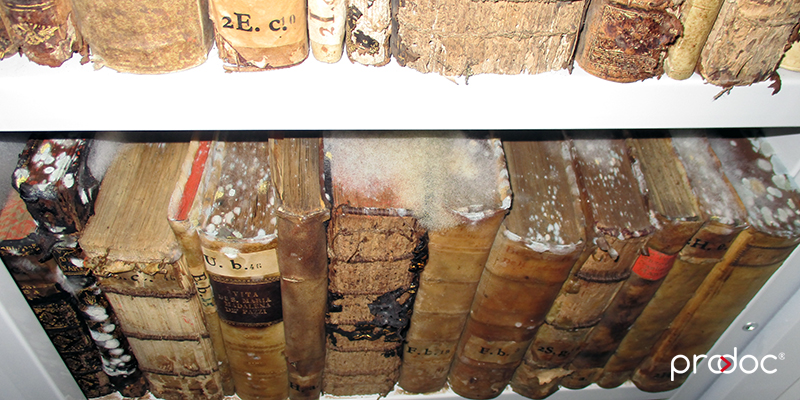
Safety procedures after a flood
The first action to put into practice is to try to restore normal environmental conditions as quickly as possible: it is necessary to drain the water, try to eliminate excessive humidity by using dehumidifiers and try to maintain the lowest temperature values possible, possibly also using air conditioning systems, and allow continuous ventilation of the premises.
The next step will be to make a visual estimate of the amount of damaged material, which is essential for establishing the subsequent methods of action: in the event that the material affected by wetting is a limited portion of the total, it is possible to proceed directly to drying by interleaving the pages of volumes with sheets of blotting paper and placing them on suction tables suitable for the purpose; if, on the contrary, the quantity of material affected by wetting is large, it will be necessary to proceed with freezing to block the processes of microbiological deterioration and to allow the preparation and division of drying operations.





